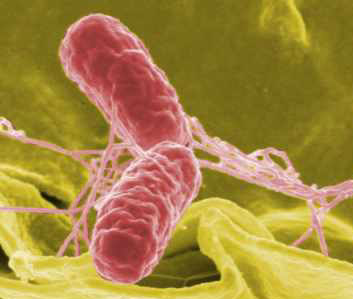Causing cancer cells to resemble part of the Salmonella bacterium can trigger the immune system to attack the tumour, scientists have announced this week.
Mount Sinai School of Medicine scientist Julie Blander and her colleagues, writing in Science Translational Medicine, have shown that if the Salmonella flagellin gene encoding the flagellum - the whip-like tail used to push the bacterium along - is added to tumour cells that are then injected into experimental mice, the cells are all destroyed by the immune system within 12 hours. Control cells lacking the flagellin gene but which are otherwise identical are largely ignored in comparison.
 In further tests, mice with melanomas were injected with identical melanoma cells to which the flagellin gene had been added. In these animals the tumours did not spread to other parts of the body, compared with control animals that developed metastatic tumour deposits.
In further tests, mice with melanomas were injected with identical melanoma cells to which the flagellin gene had been added. In these animals the tumours did not spread to other parts of the body, compared with control animals that developed metastatic tumour deposits.
The team believe that the technique works because the immune system is pre-programmed to recognise the chemical characteristics of some bacterial structures, including the proteins that form the flagellum, using structures called TLRs (toll-like receptors). The presence of the flagellar proteins on the tumour cell therefore activates the immune response against the tumour cell and also primes immunity against the cancer cells more generally. This is why the immune response then turns against the parent cancer elsewhere in the body.
According to the researchers, "immunisation with irradiated flagellin-expressing tumour cells could prevent preexisting tumour cells from developin solid tumours at metastatic sites." Meaning that if the flagellin gene were added to a sample of cells from an individual's cancer and then reinjected, they could trigger the immune system to attack and destroy the tumour, or at the very least prevent it from spreading.










Comments
Add a comment